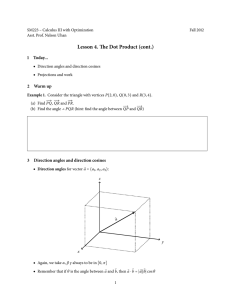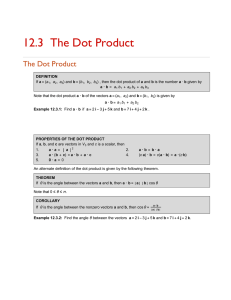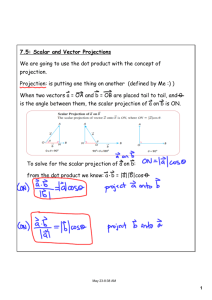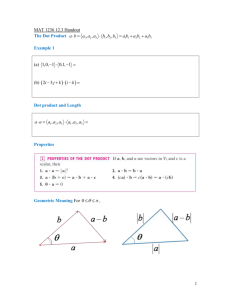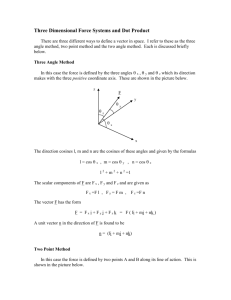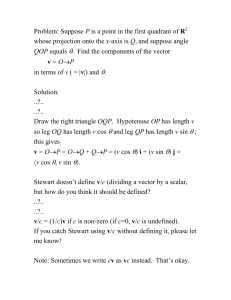Document
advertisement
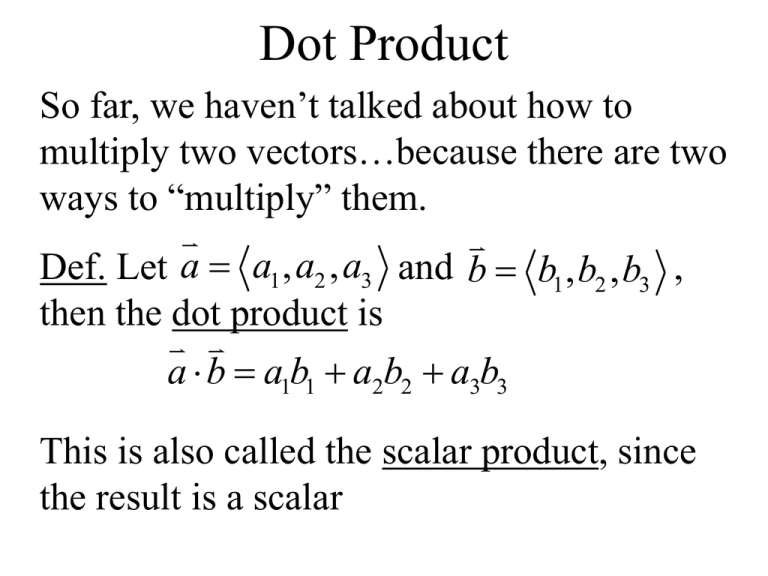
Dot Product So far, we haven’t talked about how to multiply two vectors…because there are two ways to “multiply” them. Def. Let a a1 , a2 , a3 and b b1 , b2 , b3 , then the dot product is a b a1b1 a2b2 a3b3 This is also called the scalar product, since the result is a scalar Ex. Find the dot product a) 2, 4 3, 1 b) (i + 2j – 3k) ∙ (2j – k) Properties of the Dot Product 1) a ∙ a = |a|2 2) a ∙ b = b ∙ a 3) a ∙ (b + c) = a ∙ b + a ∙ c 4) (ca) ∙ b = c(a ∙ b) = a ∙ (cb) 5) 0 ∙ a = 0 Dot product is used to find the angle between two vectors: Thm. If θ is the angle between a and b, then a b a b cos Ex. Find the angle between a 2, 2, 1 and b 5, 3, 2 Ex. Consider the points A(3,1), B(-2,3) and C(-1,-3). Find mABC. Thm. Two vectors a and b are orthogonal if a ∙ b = 0. Orthogonal = Perpendicular = Normal Ex. Show that 2i + 2j – k and 5i – 4j + 2k are orthogonal The direction angles of a vector a are the angles α, β, and γ that a makes with the positive x-, y-, and z-axes, respectively. Consider α… It’s the angle with the x-axis, so it’s the angle with i. a1 cos a a3 cos a a2 cos a These are called the direction cosines of a. a cos ,cos ,cos a cos cos cos 1 2 2 2 Ex. Find the direction angles of a 1, 2,3 The vector projection of b onto a, written projab, is the “shadow” that is cast by b onto a b proja b a The scalar projection (also called the component) is the magnitude of the projection Let’s find compab b proja b a a b comp a b a a b a b proja b 2 a or a aa a Ex. Find the scalar and vector projections of b 1,1, 2 onto a 2,3,1
